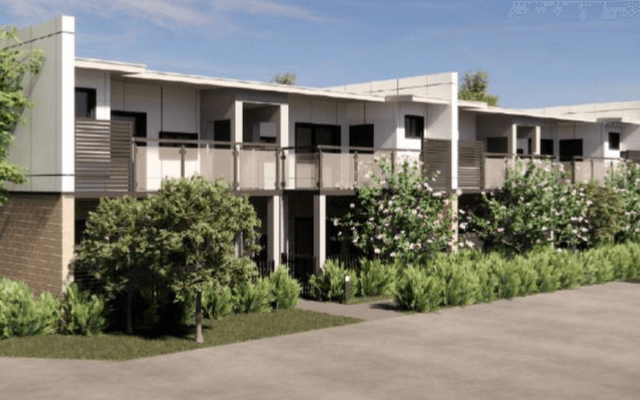This article is from the Australian Property Journal archive
THE NSW government will unleash a major rezoning around Sydney transport hubs and more than 30 other locations across the state in a bid to unlock residential supply amid the housing crisis, as well as relocating Rosehill Racecourse into a racing and residential precinct.
Eight Sydney transport hubs – Bankstown, Bays West, Bella Vista, Crows Nest, Homebush, Hornsby, Kellyville and Macquarie Park – will all undergo accelerated rezoning by November 2024 for the delivery of up to 47,800 new, high and mid-rise homes over the next 15 years.
It will aim to deliver the homes within 1,200 metres of these Metro and rail stations. To speed up the delivery of homes over the next five years, developers will be able to access a new State Significant Development pathway for proposals of $60 million or more, and construction will be required to start within two years of approval.
Affordable housing held in perpetuity will make up to 15% of homes in these locations.
The National Housing Accord aims to deliver 1.2 million “well-located” new homes over five years, with NSW’s share coming in at about 75,000 homes per year. Completion rates are closer 25,000 annually. Master Builders Australia CEO Denita Wawn has said that achieving the national total five years will be a “huge challenge”, while Oxford Economic Australia’s senior economist Maree Kilroy previously labelled the target “very unrealistic”.
There is also the Housing Australia Future Fund’s target is 30,000 social and affordable homes in its first five years that will need to be met.
The Minns Labor government has also announced it will snap rezone 31 locations across NSW to make residential flat building permissible in all residential zonings, allowing for 138,000 new homes to be created within 400 metres of Metro or suburban rail stations and town centres,
The stations are: Adamstown, Ashfield, Banksia, Berala, Booragul, Canterbury, Corrimal, Croydon, Dapto, Dulwich Hill, Gordon, Gosford, Hamilton, Killara, Kogarah, Kotara, Lidcombe, Lindfield, Marrickville, Morisset, Newcastle Interchange, North Strathfield Metro, North Wollongong, Rockdale, Roseville, St Marys Metro, Teralba, Tuggerah, Turrella, Wiley Park and Wyong.
The NSW government said these locations have been identified as being capable of accommodating new homes within existing enabling infrastructure.
Sydney unit rents have increased by 24% over the year to the end of September, along with house rents lifting by 11%. In the early 1980s, the average house in Sydney cost $78,900, or about five times a full-time average wage. Now, the price of a typical Sydney house is 17 times more expensive and is 14 times the average income.
“The NSW government believes if we are going to tackle this crisis, to create more housing supply that will drive down the cost of renting or make buying a home more affordable, we need more homes, our city will have to change,” it said.
Today’s announcements build changes the announced last week that the state government will set the expectation for councils so that more homes of different types are built in areas close to transport. It will also mean that councils can’t say no to certain types of buildings, like terraces, residential flat buildings, manor houses, duplexes, and semi-detached houses in locations that are zoned for them. If a council changes its rules to match the new state rules, then the state government’s rules won’t apply to them anymore.
“When I was young and graduating from high school, the key question my friends and I asked each other upon graduation was: “Will we ever be able to afford to buy a house in Sydney?” NSW Premier Chris Minns said yesterday.
“The question for many these days is ‘Will I even be able to afford to rent a place here?’
“The simple truth is we don’t have enough well-located homes for the people who make up our city – and that has to change if we want our kids to be able to afford a home in Sydney and not leave for other states.
“But to do this, we need to reset our planning system so we can bring forward and scale up housing delivery.”
NSW Minister for Planning and Public Spaces, Paul Scully said the housing crisis means “all levels of government and industry need to step up to our shared responsibility to get more people into homes faster and meet our collective National Housing Accord commitment”.
Rosehill relocation, “Reset” of Sydney Metro West
Meanwhile, the state government has commenced discussions with the Australian Turf Club (ATC) on a proposal to relocate Rosehill Racecourse and build up to 25,000 new homes, surrounded by greenspace and a new Sydney Metro West station.
The proposal, which was brought to the NSW government by the ATC, centres around the potential to build more than 25,000 new homes on the Rosehill Racecourse site. This would allow the government to explore the feasibility of a new Metro West Station at Rosehill.
“The plan will secure the long-term future of horse racing in NSW and the 90,000 jobs it supports with several sites across Sydney to be earmarked and investigated for a new, world-class racecourse track and facilities,” the government said.
The NSW government and the ATC have signed an MOU on the potentially historic plan, which would be subject to the NSW government’s unsolicited proposals process.
Meanwhile, the government also announced a “reset” of the Sydney Metro West program following an independent review that found the current nine-station alignment of Sydney Metro West needed to be committed to at a minimum, an opening date of 2032 be targeted, and that Sydney Metro provide a consolidated property and placemaking strategy across all existing lines to support the government’s priorities regarding housing supply.
“Sydney Metro will move to shortlist delivery partners and develop a procurement model that provides opportunities to get the most housing and the best return from this significant investment for the people of NSW,” the government said.




